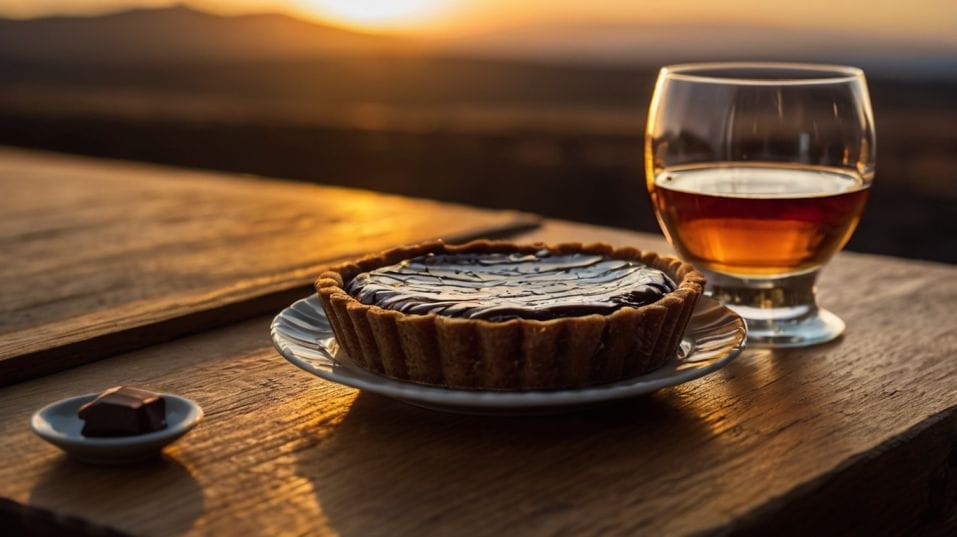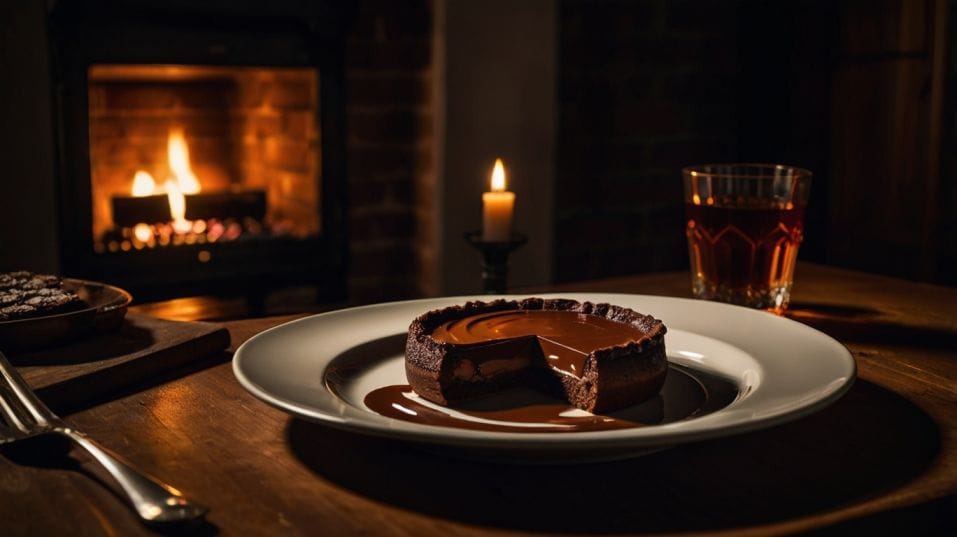Dessert Pairings That Actually Work with Whiskey
Explore whiskey-dessert pairings that sharpen your palate. Learn to match with intent, avoid common traps, and taste with real confidence.

Ever wondered why most whiskey-and-dessert pairings feel like sugar overload with no payoff? It’s not you—it’s the dessert. If you’re getting serious about whiskey, the right dessert doesn’t just complement your pour—it sharpens it.
Great pairings push flavors forward, reveal hidden layers, and help you taste with purpose. This guide isn’t about indulgence. It’s about precision. Pairing to learn. Sipping to discover. Ready to turn dessert into your best whiskey tool?
Why Most Pairings Fail (And How to Avoid It)
Most people think “sweet + sweet = match.” It doesn’t. Whiskey has structure. It has acid, oak tannins, heat, spice, smoke—layers that can get buried under heavy-handed desserts.
When you’re pairing, you’re not just looking for harmony. You’re looking for interplay. You want contrast, echo, or balance. Something that pulls flavor forward—not pushes it down.
Here’s what to aim for:
- Contrast: Spice against creaminess. Heat against cold. Bitter against sweet. These oppositions wake up your palate.
- Echo: Repeating flavor notes—caramel with caramel, nut with nut—without mirroring sweetness.
- Balance: Dessert should frame the whiskey, not compete with it. Let one lead and the other follow.
The more you pair with purpose, the more you’ll start to taste on purpose.

Chocolate Isn’t Always the Answer (But Sometimes It’s Perfect)
Dark chocolate is the go-to dessert for whiskey pairings—but it’s easy to get wrong. Too bitter, and it can fight the oak. Too sweet, and it dulls the whiskey’s nuance. The real move? Use chocolate as a platform.
Take a single-origin dark chocolate tart—70–75% cocoa, low sugar. Now pair that with a high-rye bourbon. The tart has bitterness and structure; the whiskey brings heat, vanilla, baking spice.
You’re not chasing chocolate flavor. You’re unlocking complexity: the dry finish of the chocolate forces you to notice the sweetness and spice in the whiskey. You learn from it.
Flip the script with milk chocolate ganache and an Islay Scotch. The rich, fatty sweetness pulls the iodine and sea spray right to the surface.
Smoke and sugar don’t cancel out. They provoke each other. The lesson: chocolate works if it’s treated like a foil—not a mirror.
Texture: The Secret Weapon No One Talks About
Texture does more than affect mouthfeel. It changes how you perceive aroma, temperature, even sweetness. That matters—because whiskey isn’t just a liquid.
It’s an experience in motion. How a dessert moves in your mouth affects how whiskey lands.
Hard textures—like shortbread, biscotti, or nut brittle—give structure. They make you chew, slow down, reset. A buttery shortbread with a Speyside Scotch pulls out orchard fruit and malt.
A rye next to toasted hazelnut biscotti finds clarity in its spice. These textures give whiskey space to work.
Soft desserts—like mousse, custard, bread pudding—require more precision. They can overwhelm delicate whiskeys or mute sharp ones. But play the balance right, and you get synergy.
Imagine vanilla bean panna cotta with a lightly peated Highland malt. The cream tames the smoke, reveals the malt. Suddenly, it’s not about contrast—it’s about subtle layering. Texture is your quietest teacher. Listen to it.
Temperature Is a Game-Changer
Temperature messes with perception—intentionally or not. Cold can suppress aroma and alcohol heat. Warmth can amplify both. Use that.
Let’s say you’re working with a high-proof bourbon—cask strength, north of 55%. On its own, it punches. But with a cold dessert—salted caramel gelato, say—the burn gets dialed down. The fat and chill soften the blow.
What you’re left with is flavor clarity: brown sugar, oak char, vanilla extract, maybe a hint of leather or cherry cola. That’s a tasting moment you feel as much as taste.
Go the other way with a warm sticky toffee pudding. The heat and sugar turn a sherry cask single malt into dessert itself. Dried fruit notes explode. The whiskey’s tannins become texture. The finish stretches longer than it should.
Don’t overlook this: your tongue reacts differently based on temperature. Smart pairings use that to stretch perception.
Build Flavor Memory with Smell, Not Just Taste
Most whiskey beginners skip this, but here’s where your palate levels up: use dessert to train your nose. Smell the dessert before you even sip the whiskey.
Take a mental snapshot—cinnamon, toasted sugar, stewed apple, clove. Now go to the whiskey. Swirl. Sniff. You’ll find that same language—just quieter, deeper, sometimes distorted. That’s where flavor recognition is born.
Apple crumble with a Tennessee whiskey? Suddenly the vanilla and char in the spirit become baked fruit and crust. Almond tart with a Japanese whisky?
Now the toasted nuts and subtle florals in the whisky sharpen into focus. You’re not inventing flavor—you’re learning to detect it.
This is the part of whiskey no one tells you about. You don’t just develop taste—you develop memory. Good dessert pairings turn your palate into a library.
Avoid These Common Pitfalls
Even smart drinkers fall into these traps. Here’s how to sidestep them:
- Don’t match proof to sweetness. High-proof doesn’t always need sweet. Sometimes it needs structure. Try acidity, salt, or bitterness instead.
- Avoid over-spiced desserts. If your dessert is already loaded with cinnamon, ginger, or clove, you’ll drown out the spice in your whiskey.
- Skip ice cream unless you’re strategic. Most cold desserts dull flavor. If you’re using them, make sure they have a flavor purpose—salt, fat, or bitter to cut through.
Control your pairing like you control your pour.
Final Thoughts
If you want to drink better, pair smarter. Dessert isn’t just a treat—it’s a tool. The right one can stretch your senses, challenge your palate, and unlock flavors you didn’t know were in your glass. Every pairing is a test. Every sip, a chance to learn.
So don’t wait for the “perfect bottle” or a special occasion. Tonight, pour something meaningful. Pair it with real intent. Use contrast, texture, temperature. Train your nose. Build your flavor map. Taste like it matters—because it does.




